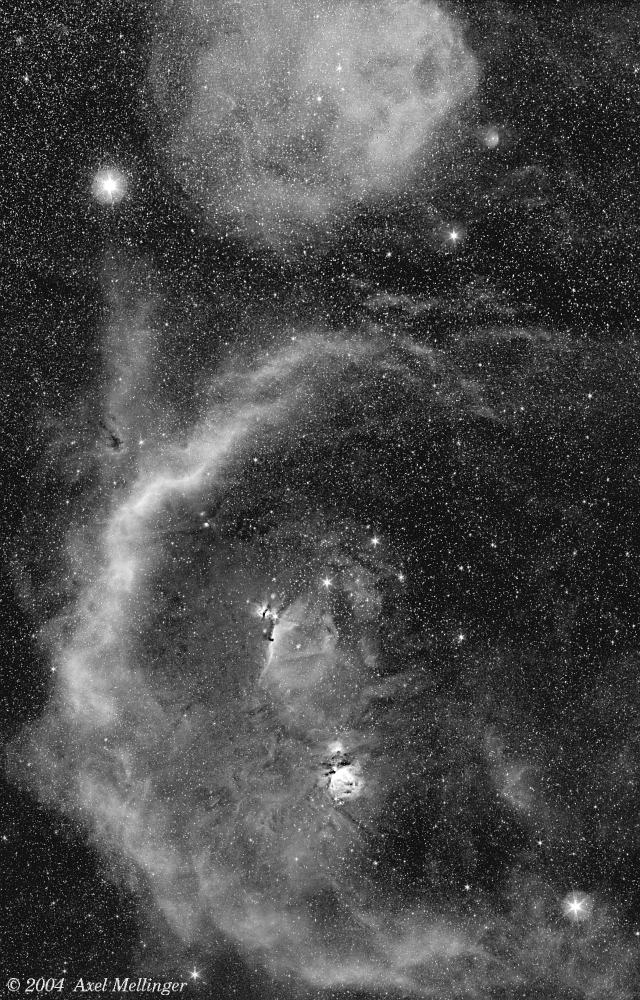Orion with Barnard's Loop
(combined CCD/Film mosaic)

Move your mouse cursor over the image to see the
color version. With the mouse off the image area you should see
the Ha image.
Javascript support in your browser must be enabled.
Higher resolution (1024x1600) versions:
H&alpha (b/w) and
color.
The constellation of Orion features one of the largest emission nebulae in the
sky: Barnard's loop (discoverd by E. E. Barnard around 1900), which
was probably formed by a series of supernova explosions some 3 million
years ago. Also visible are Great Orion Nebula (M42, overexposed) and
the Horsehead Nebula.
This Hα/color mosaic is a combination of many CCD and film images,
recorded over a time span of four years. The Hα frames are the most recent
and show McNeil's newly discovered nebula (see this
enlargement). 8 fields were photographed
from locations in Germany and South Africa and stitched together using
techniques developed for assembling my all-sky panorama.
The color mosaic was
recorded on Kodak PJ-400 negative film at Organ Pipe Cactus National Monument, Arizona.
Both the red and luminance channel were replaced with the Hα data.
Total exposure time: approx. 8.5 hours.
| Lens |
: |
Hα: Minolta 1.4/50 mm lens, stopped down to
f/2.8 or 2.4
Color: Minolta 2.8/135 mm, stopped down to f/4
|
| Camera |
: |
Starlight Xpress SXV-H9 and Minolta SRT-101
|
| Mount(s) |
: |
Losmandy G-11 and Super Polaris DX
|
| Filter |
: |
Astronomik Ha (13 nm FWHM)
|
| Guiding |
: |
ST-4 autoguider (Hα only) |
| Date |
: |
Hα images: 20 Feb. 2004 (Germany)
and 23 Mar. 2004 (South Africa)
Color: 31 Dec. 1999, 03 Jan. 2000 |
| Exposure time |
: |
Ha: each field
2x15 min; color: each field 45 min |
| Site |
: |
Hα: Baruth, Brandenburg (Germany)
and Ezeljaght Farm near Sutherland (South Africa).
Color: Organ Pipe Cactus National Monument, Arizona.
|
| Processing |
: |
Bias subtraction, dark frames and digital development: IRAF;
mosaic assembly: SExtractor, Match, custom software
and Swarp;
Post-processing: Gimp
|
 Back to image gallery
Back to image gallery
© 1999-2004 Axel Mellinger
Send comments and bug reports to: axm@rz.uni-potsdam.de

 Back to image gallery
Back to image gallery